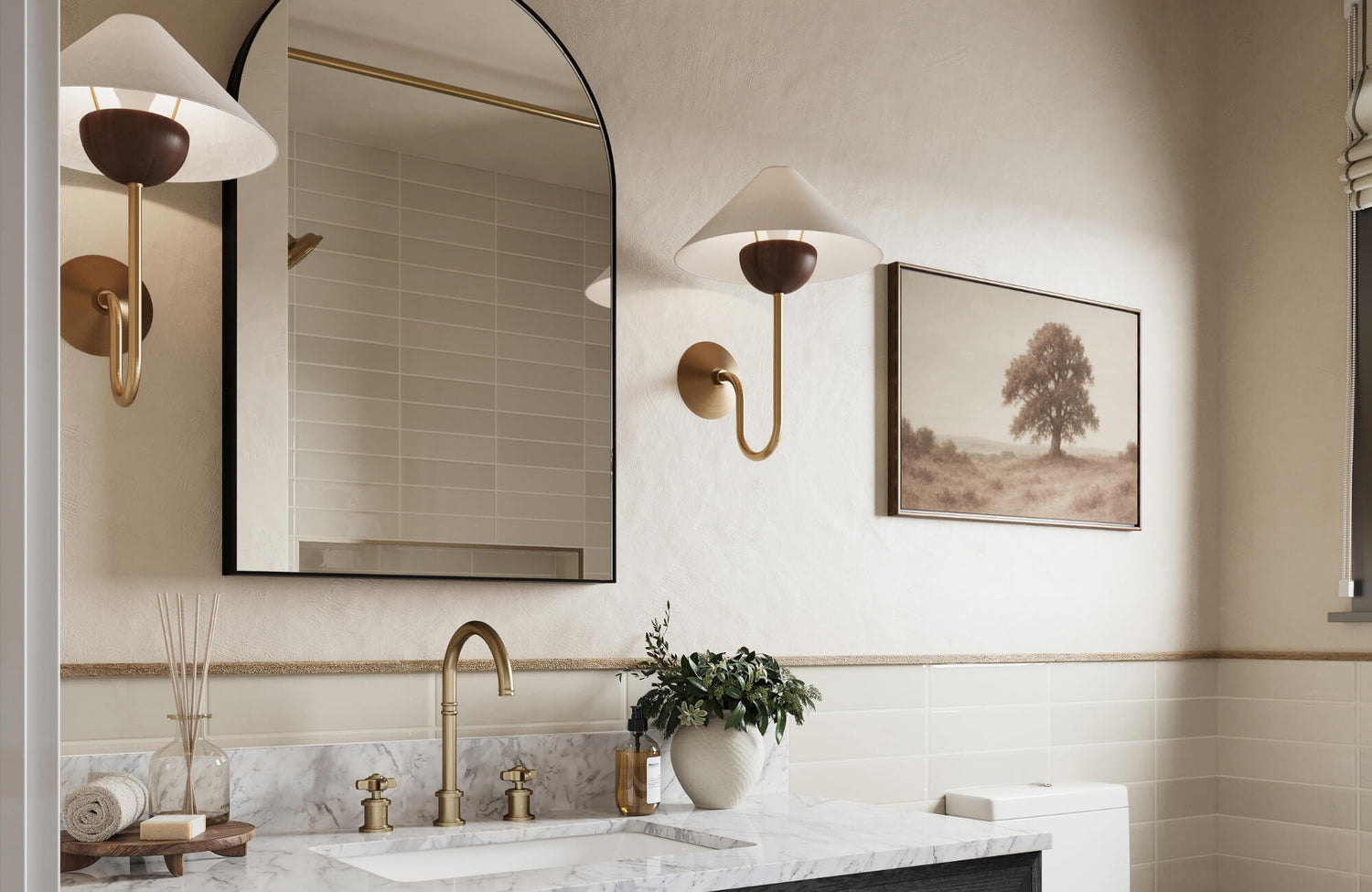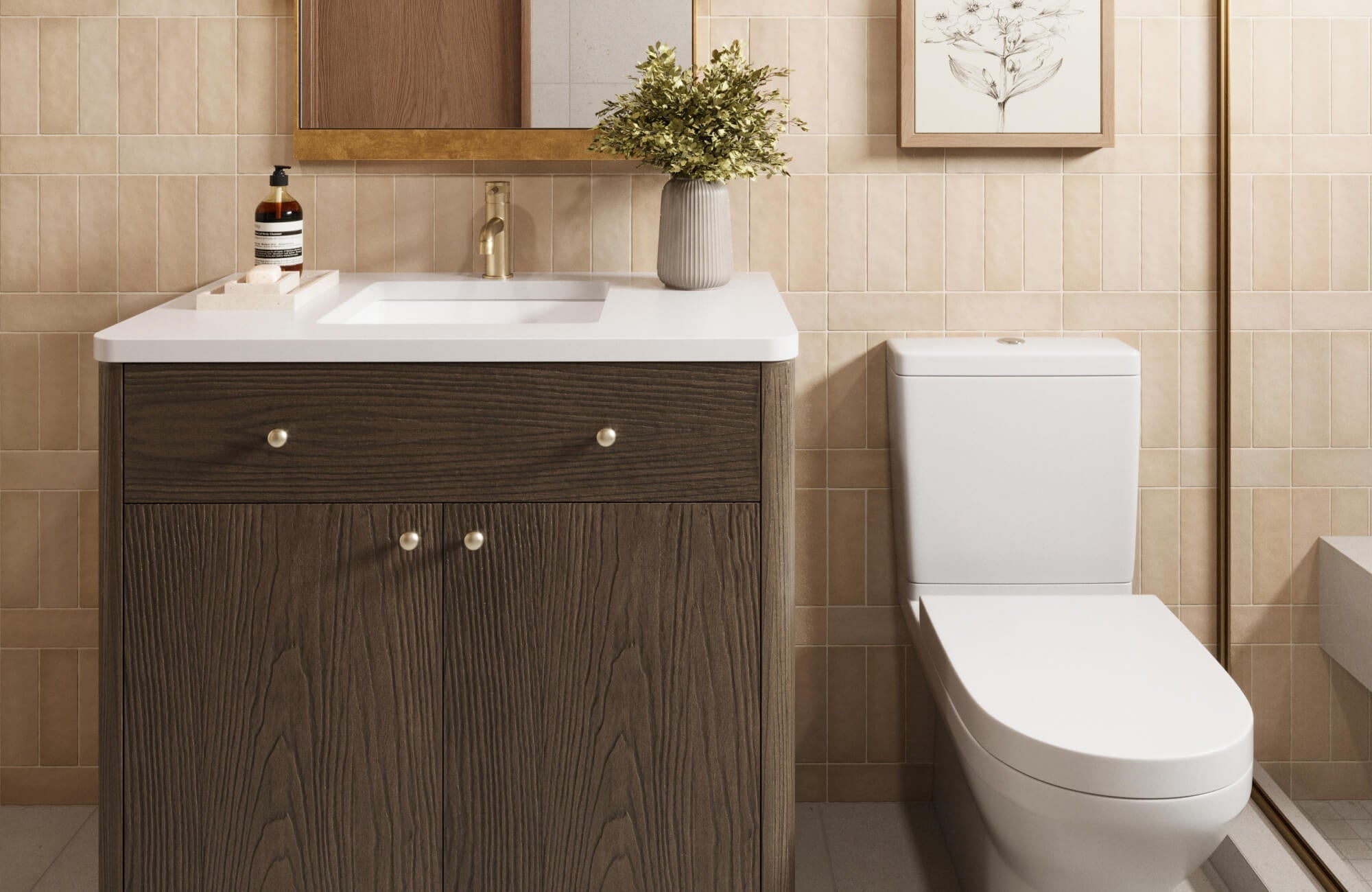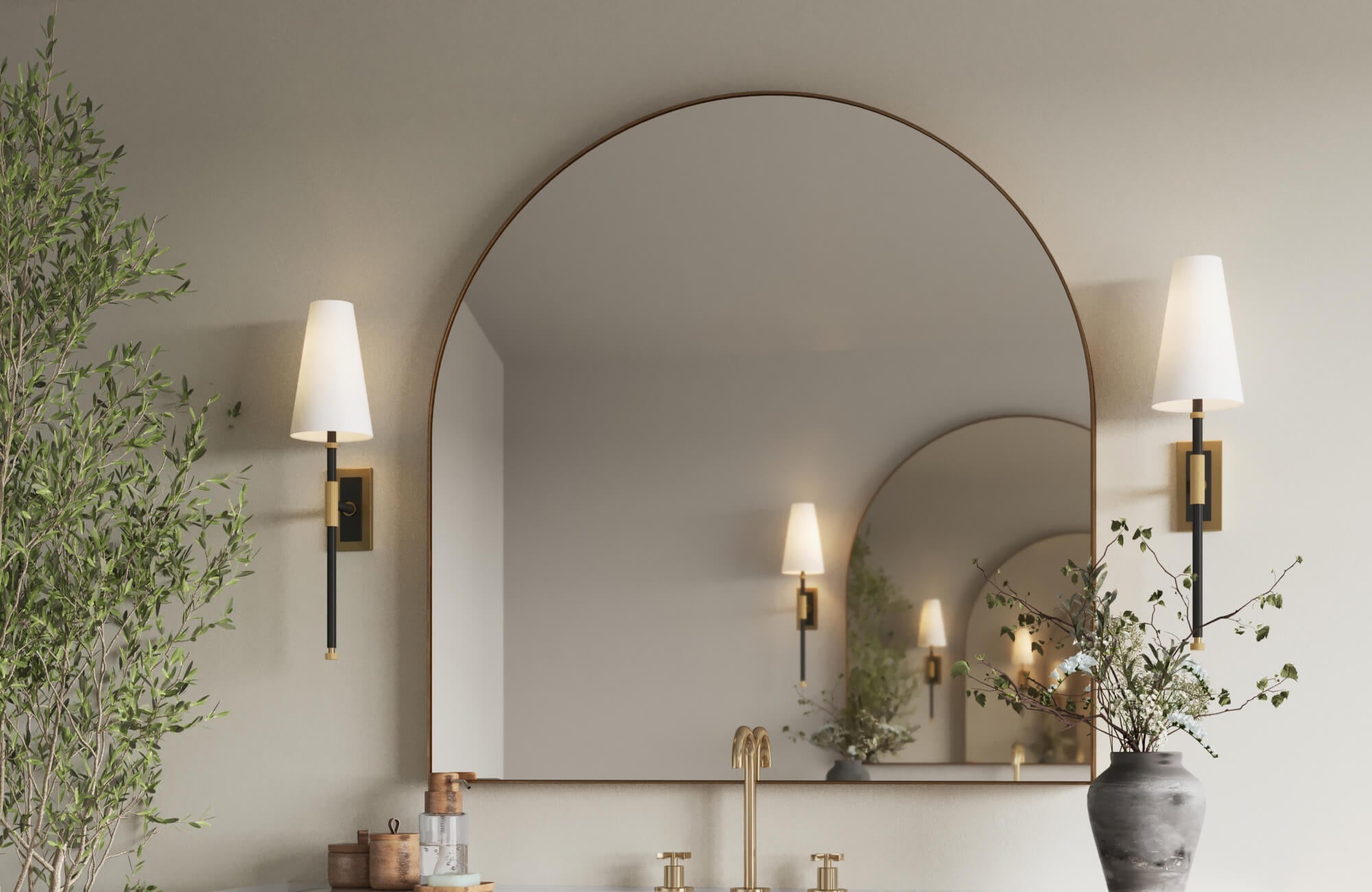General lighting, the backbone of a well-lit home, does far more than simply illuminate, it establishes the tone, clarity, and rhythm of your living space. As the primary layer in a lighting plan, it provides consistent brightness that anchors the overall design, ensuring safety, comfort, and cohesion throughout the home.
More importantly, general lighting does more than passively illuminate, it actively shapes how we experience interiors by defining scale, enhancing architectural flow, and supporting daily routines. With that in mind, this blog will explore how to harness the full potential of general lighting, guiding you through fixture selection, layout strategy, and thoughtful integration to elevate both the function and feel of your space.
The Foundational Role of General Lighting in Home Safety
While general lighting often goes unnoticed when it’s working well, its role in home safety is anything but subtle. From preventing everyday mishaps to reinforcing your home's security, the right ambient lighting design quietly protects what matters most.
Preventing Falls and Accidents
To begin with, general lighting ensures clear, consistent visibility throughout the home, significantly reducing the risk of slips, trips, and falls, especially for vulnerable individuals such as children, older adults, or those with limited mobility. Even light distribution eliminates shadows and dark zones that can obscure stairs, thresholds, or changes in floor level. In particular, busy areas like hallways, kitchens, and entryways benefit from recommended light levels (typically 5 to 20 foot-candles) to support safe movement at all times.
In addition, the choice of fixture specifications significantly impacts visibility. A Color Rendering Index (CRI) of 80+ and a neutral-white Correlated Color Temperature (CCT) between 3000K and 4000K help enhance contrast without introducing glare. Complementing this, layered lighting solutions, such as motion-activated LED tape lights or wall sconces with occupancy sensors, offer soft, targeted illumination during nighttime hours, improving visibility while maintaining a comfortable atmosphere.
Enhancing Security and Deterrence
Building on its role in preventing accidents, general lighting also strengthens home security. Outdoors, strategically placed fixtures, such as floodlights, soffit lights, and dusk-to-dawn sensors, discourage unauthorized access by increasing visibility and eliminating potential hiding spots. Studies consistently show that well-lit exteriors reduce the likelihood of break-ins by raising the perceived risk of detection.
Furthermore, indoor ambient lighting supports modern security systems. Consistent illumination enhances the effectiveness of surveillance cameras, particularly in transitional zones like garages or mudrooms. Meanwhile, smart lighting systems that simulate occupancy through automated scheduling provide an added layer of psychological deterrence. In the event of a power outage, fixtures with battery backup or generator connectivity ensure essential areas remain lit, aiding safe navigation and timely emergency response.

The Aesthetic Impact of General Lighting on Home Design
Beyond lighting the way, general lighting also has a subtle yet impactful influence in defining the personality of a space. When used with intention, it not only influences how a room feels but also draws out the beauty in its structure and materials.
Setting the Overall Mood and Ambiance
At its core, general lighting defines a room’s emotional tone, whether warm and welcoming, crisp and modern, or serene and tranquil. This is primarily controlled through CCT, illuminance levels, and fixture style. For instance, warm whites (2700K–3000K) are ideal for bedrooms and living spaces, while cooler tones (3500K–4100K) help energize kitchens and work areas. Choosing the right CCT ensures lighting aligns with a room’s intended mood and function.
Moreover, in multifunctional or open-concept layouts, general lighting supports visual cohesion across zones. Dimmable fixtures and smart controls allow users to adapt brightness throughout the day, while the choice of fixture, ranging from flush mounts to recessed downlights, helps unify form with function. Subtle shifts in intensity, introduced through diffusers or reflector trims, add visual depth without overwhelming the space.
For example, as shown above, the Esme 26" Wall Sconce in Aged Brass from Edward Martin demonstrates how a well-chosen fixture enhances ambiance. With its sleek lines and soft glow, it not only complements the room’s palette but also contributes to a warm, refined atmosphere, showing how lighting design can influence both style and emotion.
Highlighting Architectural Features and Materials
In addition to setting the mood, general lighting also elevates architectural details and material finishes. Even, well-distributed light from ceiling fixtures or cove-mounted LEDs reveals the character of textures like matte plaster, exposed beams, or polished hardwood flooring. Furthermore, high-CRI lighting (90+) preserves the integrity of natural colors, making wood grains, stone veining, and metal finishes appear vibrant and true.
Additionally, in homes with distinctive ceiling profiles, such as tray, vaulted, or coffered designs, general lighting adds both depth and definition. Recessed lights placed in alignment with structural symmetry highlight these architectural features, while concealed uplighting softly outlines boundaries to create atmospheric contrast without harsh glare.
Finally, by integrating general lighting directly into ceiling panels or using linear fixtures to trace movement pathways, designers ensure that light becomes part of the home’s architectural language.

The Functional Imperative of General Lighting
At its most practical level, general lighting ensures that a home functions smoothly from morning to night. By providing consistent illumination, it supports both everyday movement and the clean integration of other lighting layers that bring depth and purpose to each space.
Enabling Basic Visibility for Movement
As mentioned earlier, general lighting’s primary task is to enable safe, confident movement by eliminating dark zones, minimizing visual strain, and clarifying pathways. In residential lighting design, achieving appropriate illuminance, typically 30–50 lux in hallways and up to 300 lux in living areas, is essential for maintaining clear visibility.
In addition to brightness levels, maintaining consistent light distribution is essential for visual comfort. A uniformity ratio near 2:1 helps prevent abrupt changes in lighting that can disrupt visual comfort. This is typically achieved through the strategic placement of recessed downlights, LED panels, or ceiling-mounted fixtures with wide beam angles and diffusers.
Moreover, well-placed pendants enhance functional lighting in key areas like kitchens and dining zones. Take the Hilda 12" Pendant in Distressed Bronze by Edward Martin, as featured above, it delivers a blend of clarity and warmth, casting diffused light that reduces shadows and defines movement paths. Its elegant finish and thoughtful scale also add a refined touch, making it both a functional and aesthetic asset in kitchens or dining zones.
Creating a Foundation for Layered Lighting
In addition to its primary function, general lighting also serves as the base layer in a well-executed layered lighting strategy. When evenly distributed, it allows task and accent lighting to perform their roles more effectively without visual competition or imbalance.
To support this integration, designers focus on factors such as fixture placement, beam spread, and dimming capability. In multi-use spaces like kitchens, for instance, overhead ambient lighting delineates zones, while under-cabinet and pendant fixtures offer task-specific brightness and visual rhythm. Additionally, smart lighting controls enable users to adjust brightness and CCT to suit different activities, whether prepping meals or winding down at night.
Ultimately, when general lighting is thoughtfully calibrated, it not only fulfills its individual purpose but also ensures that all other lighting elements function cohesively within a responsive environment.

General Lighting and Home Well-being
While general lighting is often seen as purely functional, its impact reaches far beyond illumination. When thoughtfully applied, it can shape how we feel in a space, affecting everything from emotional balance to how clean and organized our surroundings appear.
Influencing Mood and Psychological Comfort
For starters, light is a key regulator of our circadian rhythms, which influence mood, focus, and sleep patterns. Exposure to cooler light (4000K–5000K) in the morning promotes alertness, while warmer tones (2700K–3000K) in the evening encourage relaxation. By integrating tunable white LEDs or smart systems with circadian modes, you can align interior lighting with natural biological cycles, enhancing clarity during the day and easing transitions into nighttime routines.
Light quality, just as much as timing, shapes the emotional tone of a space. Smooth, evenly distributed illumination with minimal glare helps ease visual strain and promotes a restful atmosphere, especially in areas like bedrooms and bathrooms. A fitting example is Edward Martin’s Prudence 1-Light Wall Sconce in Aged Brass, as illustrated in the image above, offering a gentle, ambient glow that soothes the senses while subtly enhancing the room’s design with its elegant, understated presence.
Contributing to a Sense of Cleanliness and Order
Beyond psychological comfort, general lighting also contributes to how clean and organized a space appears. Bright, evenly distributed illumination reveals surfaces clearly, making it easier to identify dust, clutter, or wear. This is especially important in areas where cleanliness is a priority, like kitchens, bathrooms, and entryways.
To support this effect, fixtures with high luminous efficacy and a CRI of 90+ ensure materials like stainless steel, stone, and porcelain are presented with crisp, accurate color. Furthermore, diffuse lighting from frosted lenses or architectural coves prevents harsh shadows and softens edges, reinforcing a clean, visually balanced environment.
In the end, general lighting reveals not just what we see, but how we experience our surroundings. By enhancing both the physical and emotional clarity of a space, it promotes a deeper sense of comfort, control, and well-being.

Strategic Planning for Effective General Lighting
Creating truly effective general lighting starts with more than just choosing stylish fixtures, it requires a thoughtful plan tailored to how each space functions and feels. By considering layout, fixture performance, and modern technology, you can build a lighting strategy that’s both practical and adaptable to daily life.
Assessing Room Needs and Layout
As a first step, planning starts with a clear understanding of how each room is used and how its physical features influence lighting performance. Illumination levels should correspond to a space’s function, kitchens may require 300–500 lux for food prep, while bedrooms typically need only 100–150 lux for ambient comfort.
In addition, elements like ceiling height, room geometry, and architectural barriers (such as beams or built-ins) can significantly impact light distribution. Taller ceilings often benefit from high-lumen or suspended fixtures, while lower ceilings are better served by recessed or flush-mounted options. To ensure optimal performance, lighting designers frequently rely on photometric tools to simulate brightness and distribution, minimizing shadow zones and enhancing visual consistency.
Consider the Carly 34" Pendant in Vintage Brass from Edward Martin, a fixture that bridges performance and style. As shown in the photo above, its large scale is ideal for kitchens with high ceilings, casting ample light over prep areas while visually anchoring the space. With its warm metallic finish and clean lines, it enhances both the room’s functionality and its architectural rhythm.
Selecting Appropriate Fixtures and Bulbs
Once room needs are assessed, the next step is selecting fixtures and bulbs that support both design aesthetics and lighting efficiency. Ceiling-mounted options, such as flush mounts, recessed downlights, and chandeliers, should align with the room’s proportions and style. For instance, wide-beam recessed lights work well in clean, minimal spaces, while ornate pendants or chandeliers make bold statements in traditional or eclectic interiors.
When it comes to bulbs, LED technology remains the standard thanks to its high luminous efficacy, longevity, and flexibility. To emphasize accurate color rendering, choose bulbs with a CRI of 90+ and a CCT range between 2700K and 3500K to create a warm yet balanced ambient glow. Additionally, ensure dimmability and driver compatibility to accommodate varying lighting needs throughout the day.
To support these decisions, Edward Martin offers a design consultation service that makes the process both intuitive and personalized. From one-on-one design guidance to dedicated follow-ups, this service helps align your lighting selections with your room dimensions, finishes, and intended ambiance.
Moreover, if you need assistance coordinating fixtures, fine-tuning lighting tone, or pairing lighting with rugs and furnishings, simply contact us. Our expert team is ready to provide the tailored advice you need to bring your vision to life.
Integrating Smart Lighting Solutions
As a final layer of planning, integrating smart lighting can significantly enhance your system’s flexibility, comfort, and energy efficiency. These systems allow users to control brightness, color temperature, and scheduling via mobile apps or voice assistants. Many also support circadian rhythm synchronization, automatically adjusting color temperature and intensity to align with your body’s natural sleep-wake cycle.
In addition, advanced options like Zigbee- or Wi-Fi-enabled fixtures provide centralized control across multiple rooms, while sensors can trigger lighting based on occupancy or available daylight. Whether you’re retrofitting with smart bulbs or designing a new build with integrated hubs and wall-mounted controls, these solutions make it easier than ever to tailor your lighting to your lifestyle.
The Role of General Lighting in Everyday Living
In the end, general lighting is far more than a basic utility, it quietly shapes how we move, feel, and interact within our homes. By balancing safety, function, and aesthetics, it lays the foundation for a home that works well and feels intentionally designed.
At Edward Martin, we believe lighting is as essential as the materials that surround it. When planned with care, the right ambient lighting transforms your space into one that’s not only beautiful but deeply livable.








